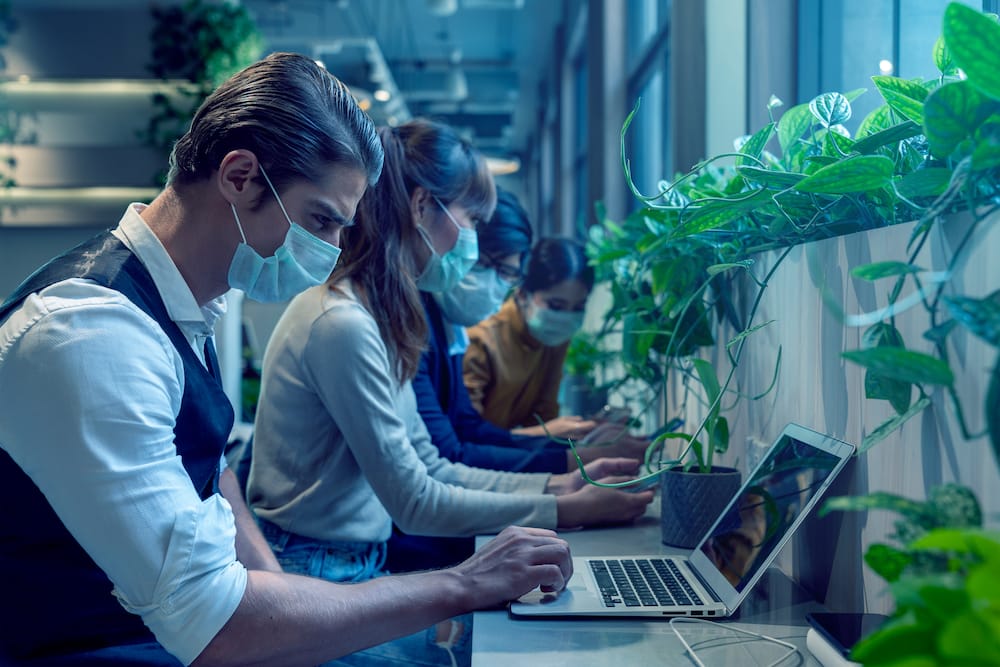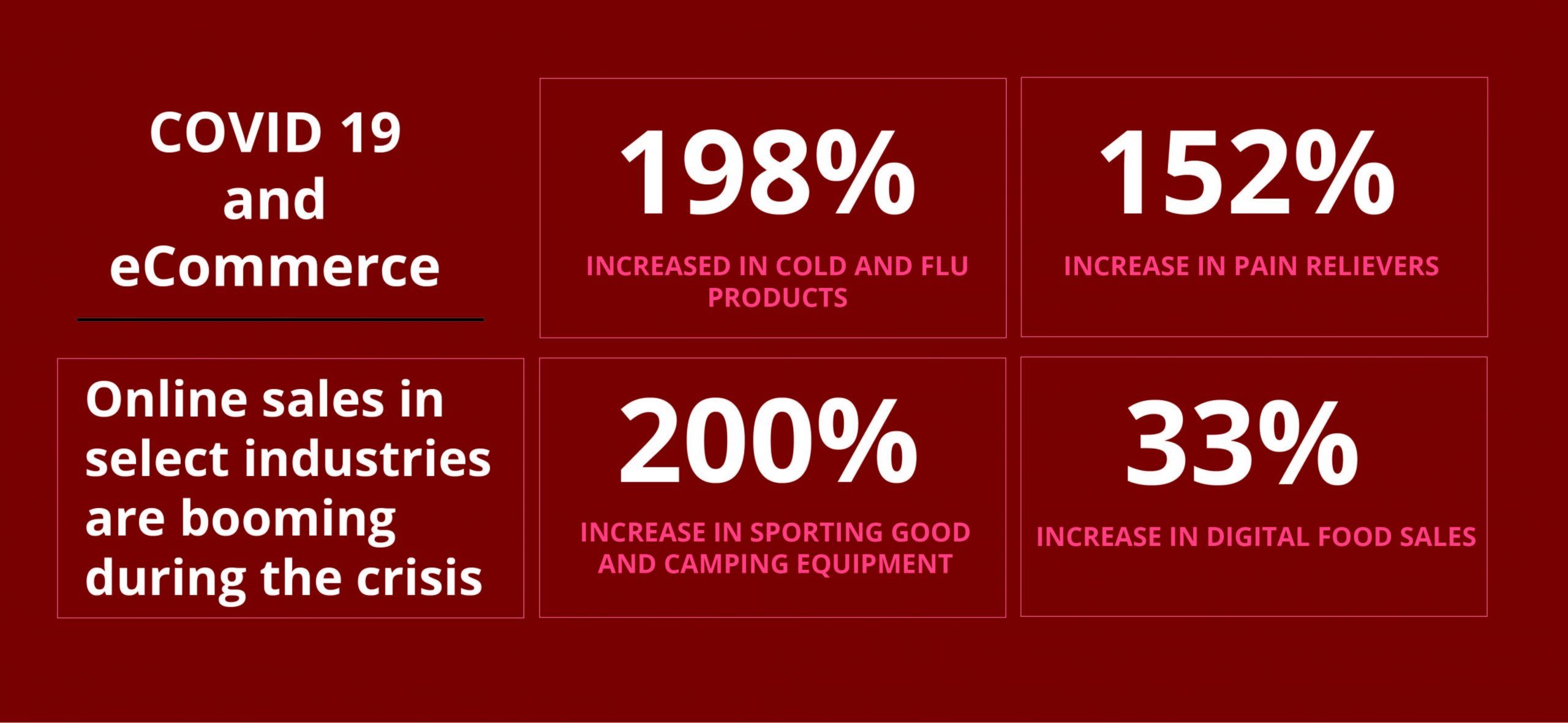
There is no doubt that the Covid-19 virus is affecting many aspects of our lives. Most non-essential places of business including many traditional brick-and-mortar locations are shut down partially if not completely at this point, and the eCommerce world is bracing for even more uncertainty. There are a lot of pontificators out there offering theories on what’s next for eCommerce but here’s what we know for certain.
Here is what we know
People are leaving their home less.
Whether due to personal fears or because of mandatory “shelter in place” quarantines, fewer and fewer people are leaving their house. In a study released last week by Coresight research, 47% of US internet users said they were avoiding malls and shopping centers. When asked if their behavior would change if the outbreak worsens, 74.6% confirmed they would avoid shopping centers and malls altogether.
And it’s not just centralized shopping centers that people are avoiding. 32.7% of poll participants said they were avoiding any physical store with 56% of confirming that they would take these same actions if the COVID threat spread.
People are shopping online for the essentials
Adobe analytics monitors the eCommerce trends and transactions of 80 of the US top 100 retailers. And while many retailers are seeing their foot traffic come to a complete halt, others are seeing surges in their online shopping. Grocery chains have seen an increase in online and home delivery orders. Amazon has seen a surge in online shopping, so much so that they have an increased demand for employees and are one of the few companies in American actively hiring at the moment. The grocery chain Stop & Shop is seeing a surge in demand for its online order and delivery service Peapod. Stop & Shop spokeswoman Jennifer Brogan said Peapod orders during the first week of March were 33% higher compared to the same week last year.
Ecommerce activity, particularly related to health and grocery, is booming in the US in general. According to data from ecommerce ad tech provider Pacvue, there have been spikes in Amazon searches for products like hand sanitizer and antibacterial soap. Adobe’s analysis of eCommerce transactions found that purchases for cold, cough & flu products have increased 198%, while online purchases for pain relievers increased 152%.U.S. consumers are stocking up on over-the-counter meds, most likely to be prepared in case they do catch the virus and need to self-quarantine.
Hierarchy of Needs
Non-essential items experience the most sales during stable times and times of growth, as we’ve seen over the last several years. But with the economic downturn and way-of-life uncertainty currently permeating all of western civilization we would expect to see a drop in these industries. While actual sales numbers are yet to be reported a Contentsquare report from March 20th brings light to some interesting statistics. Web traffic has decreased to eCommerce sites dedicated to apparel (-14%) luxury goods (-19%) and jewelry (-25%) compared to the same time period last year. Traffic over the last 4 weeks clearly shows that online shoppers have been most interested in fulfilling products in the most pressing categories among the hierarchy of needs. But as the COVID quarantine continues and people are stuck on their couches for a longer period of time it will be interesting to see if this trend begins to reverse itself. Stay tuned to InteractOne for more updates as the eCommerce marketplace continues to evolve and we adapt.

Expect shipment delays
Many Amazon customers have received notifications stating: “We’re very sorry your delivery is late. Most late packages arrive in a day. If you have not received your package by tomorrow, you can come back here the next day for a refund or a replacement.” What’s more, those hoping to order groceries or essentials from Amazon Prime, Peapod and others can also expect delays. While chains are currently saying that the problem, ‘is a demand issue, not a supply line problem’ these are all unique stresses being put on systems that have never been tested to this degree before. And if interstate or local commerce is limited even more, then customers can expect shipment delays no matter the location or product of purchase.
Will Any of These Trends Be Long Term?
It’s fairly safe to say that once the COVID panic calms down that the public’s purchasing behavior for toilet paper will return to pre-COVID levels. But what other new behaviors and consumption patterns that emerge during this time will have long term staying power? This crisis could cause permanent changes in the way people consume media, shop, as well as overall public perception of brands. People who normally wouldn’t purchase clothes or perishables online will be forced to rethink their approach when the need arises. The more customers are forced to do their shopping online in the coming months, the more likely that it will become a regular part of their routine. Especially if the threat and worry over COVID becomes something long-term.
We’re already seeing changes in the entertainment industry, with Disney making their recent theater releases available on-demand and other companies following suit. Once the public becomes accustomed to ‘social distancing’ and purchasing habits that are more eCommerce centric, it may be next to impossible to put that horse back in the barn.
Conclusion
There aren’t many certainties about life or the economy right now, but as US consumers increasingly look to digital methods to conduct daily business, order essentials and prepare for an emergency, retailers will be required to ensure positive, frictionless experiences via their websites and mobile apps.
We here at InteractOne are dedicated to protecting our employees. Thanks to a work-from-home policy that we instituted more than one year ago, we have been able to transition to our new reality with relative ease while continuing to provide support and meet all of our clients’ needs.

